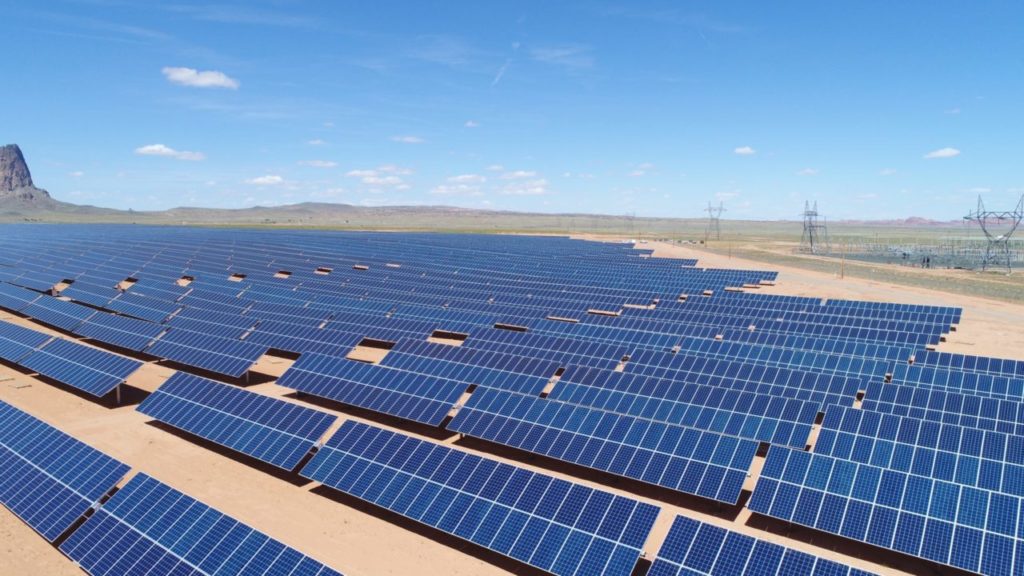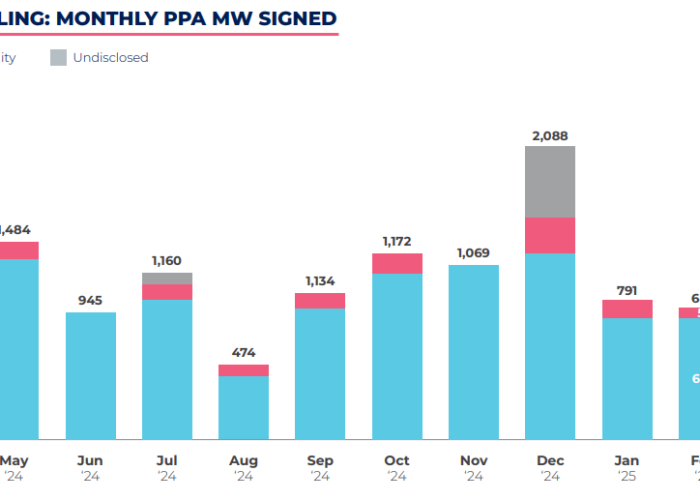
The Inflation Reduction Act (IRA) has gathered considerable attention in the solar sector, with the US solar industry beginning to reap the benefits of a renewed focus on domestic manufacturing, now 14 months since the passing of the landmark piece of legislation. One of the primary consequences has been a greater emphasis on locating manufacturing capacity in the US, with industry heavyweights First Solar and Suniva launching new manufacturing facilities in the US within the last month.
One of the key motivating factors behind the passage of the IRA, and its work to move manufacturing capacity to the US, is the concern that China’s continued dominance of the global solar industry could leave the rest of the world vulnerable, overly reliant on the priorities and initiatives of a single national government.
Unlock unlimited access for 12 whole months of distinctive global analysis
Photovoltaics International is now included.
- Regular insight and analysis of the industry’s biggest developments
- In-depth interviews with the industry’s leading figures
- Unlimited digital access to the PV Tech Power journal catalogue
- Unlimited digital access to the Photovoltaics International journal catalogue
- Access to more than 1,000 technical papers
- Discounts on Solar Media’s portfolio of events, in-person and virtual
Or continue reading this article for free
While the IRA looks to address that imbalance, it only does so in a singular manner; should the grand ambitions of the IRA be realised, and solar manufacturing become more concentrated in the US, the vast majority of the world’s population, and its manufacturing capacity, will be left isolated, caught between the extremes of China in the east, and the US in the west.
This dichotomy has already started to affect the solar sector of Europe, the region most literally caught in the middle of the superpowers. Trade body SolarPower Europe has railed against the continent’s impossible position, caught between the domestic incentives in the US that its companies are unable to access, and the low prices of solar modules built by China that undercut European products, and many European solar companies reported ominous conditions in the last few rounds of financial results.
One such company is Spanish tracker manufacturer Soltec, which posted losses of over €10 million in the first half of this year, and perhaps fears falling through the cracks as solar investment is drawn to the US and China. Yet the company’s leadership is optimistic, aiming to double the revenues generated by its US facilities between 2022 and 2025, and Soltec’s work could be something of a blueprint for other European solar players to follow, as the US and China continue their dominance of the global sector.
Improvements ahead
“The company expects solid demand in the coming quarters, with the signing of 55 contracts totalling 2.3GW up to September 2023, of which 1.3GW were signed in the last three months,” begins Raúl Morales, Soltec CEO, when asked about company’s financial future, following a first half of the year that Soltec itself described as “a slow start”.
“Our earnings announcement included some very positive developments providing high visibility for the coming quarters, including a number of significant projects won in recent weeks, which will boost our performance in H2, and definitely in 2024. We expect the fourth quarter to be our highest revenue quarter in 2023.”
Much of this pipeline covers power purchase agreements (PPAs) and new tracker deals. In September, the company announced the signing of 260MW of PPAs in Spain and Brazil, alongside agreements at five under-construction projects in Spain with a combined capacity of 29.4MW, as it looks to decarbonise its own operations.
Then, in October, the company agreed to provide trackers to a new 302MW solar project in the US state of Missouri, suggesting that there is both growth, and the capacity for growth, in all aspects of Soltec’s supply chain.
This latter deal is more in keeping with the company’s primary focus, the production of trackers. In its EU 2022-26 outlook, SolarPower Europe claims that Europe is home to “world leading players” in the balance of system field, including trackers, and Morales notes that the tracker sector, in general, is particularly encouraging for investment at present, expecting global tracker additions to reach 900GW between 2023 and 2030.
“We’ve observed a significant uptick in the demand for solar trackers, both in the overall solar industry and particularly in the US,” continues Morales, drawing attention to the potential for growth in the US in particular. “There’s an unprecedented interest in optimising solar projects. Our operational performance indicators reflect the compelling value proposition of solar trackers, and the demand is surging, especially in major photovoltaic markets like North America.”
Solar seasonality
Soltec’s financial reporting also suggested that seasonality was to blame for the company’s poor financial performance, although the fact that there is more sunlight in the summer months than the winter months is nothing new in the solar sector. This is particularly pronounced in Madrid, where, across the year, there is an average of seven hours and 58 minutes of sunlight per day, but this can rise to over 12 hours in July, and fall under five hours in November and December.
For his part, Morales suggested that variations in legislative processes, rather than variations in climate, had a greater impact on the company’s performance.
“As we highlighted at the beginning of the fiscal year, 2023 exhibits a higher level of seasonality compared to previous periods, which is inherent to the renewable industry,” says Morales. “This increased seasonality is evident in our results and can be attributed to two primary factors: the extension in the deadlines of certain administrative processes in Spain and the publication on of the guidelines for the IRA in the US.”
These “guidelines” are a series of recommendations made by the US Internal Revenue Service, which noted earlier this year that in order to quality of a 10% tax credit, renewable energy producers would have to demonstrate that 40% of the cost of producing their materials was accounted for by US-made products.
This will rise to 55% by 2026, and has raised questions for companies such as Soltec, which are heavily involved in the US downstream market, but have not yet expanded into manufacturing and production in the country.
Expanding the US footprint
This dichotomy lies at the heart of the challenge for foreign companies eager to make an impact in the US solar sector; do they follow the lead of First Solar and Suniva and relocate manufacturing capacity to the US, moves which will cost time, resources and money, or build products elsewhere and look to sell them to a US market more eager than ever to install new solar capacity?
“We’re actively strengthening our competitive position in the United States, in which we have been operating for a decade, one of our core markets, to achieve our revenue projections amid the IRA scenario,” says Morales, who goes on to suggest that Soltec’s approach will resemble the latter, targeting sales more so than manufacturing. “We’ve reinforced our teams in the region and fine-tuned our strategy to enhance our production capacity and shipments in the upcoming years.”
Morales is also eager that, over the coming years, the company’s agreements with solar developers will bear fruit. In its latest financial results, Soltec noted that it has three new agreements with “key suppliers” in the US, and is negotiating nine additional supply agreements, as the company looks to expand the contribution made to revenue by its US division from 21% of total revenues in the first half of 2023 to half of all revenues in 2025.
“In terms of our industrial business, we currently have a backlog of €88 million, constituting 30% of our global backlog,” Morales continues, suggesting much of this value will come from realising projects, and completing deals, already well under development. “Additionally, we have a pipeline worth €4.9 billion in the US market.”
The company has already built a logistics centre in Texas, and its US headquarters in Florida, states ranked second and third across the US in terms of installed solar capacity as of the second quarter of this year, according to the Solar Energy Industries Association (SEIA). The SEIA expects these states to install the most and third-most new capacity over the next five years, and Soltec aims to be physically close to this forecast growth.
Navigating legislative requirements
Soltec’s financial reporting names the IRA as a significant motivating factor behind many of these decisions, and the influence of the act is a testament to the significance legislation can have on a region’s energy sector. Morales compares the IRA to other forms of legislation around the world, in terms of encouraging steady, cautious growth in a number of jurisdictions.
“Given the magnitude of such legislation, companies tend to wait for the guidelines before making their investments, and this cautious approach is noticeable among all companies,” says Morales. “Legislation plays a pivotal role, a trend we’ve observed not just in the US but also in other regions such as Europe.”
While he notes that the IRA is “a clear stimulus for the industry”, this reliance on favourable legislation being enacted prior to solar companies agreeing to support new projects, or solar suppliers decided to strike new deals, does create a power dynamic where the private companies responsible for realising the energy transition are often left waiting for a national government to pass legislation. This is particularly significant for companies such as Soltec, which operate across a number of jurisdictions, and manage a supply chain covering several different legislatures.
“It’s not about discouraging international cooperation but rather being prepared for potential logistical disruptions,” says Morales. “Considering the objectives set by the EU, the US and Asia, there’s a need to ramp up industrial production. To achieve targets, it becomes crucial to incentivise production.”
As a result, Morales is understanding the IRA and its impacts as not an industry-changing set of rules that will fundamentally later the balance of power in the global solar industry, but the latest in a series of legislative changes that have become common in the sector.
While Soltec’s stated projects suggest that the company is targeting sales, rather than manufacturing, in the US, Morales noted that, within the context of the IRA, a greater focus on manufacturing could be of interest in the future.
“Local production does come with fewer risks and numerous advantages,” says Morales. “The agreements we’ve signed with US suppliers, along with those currently in progress, not only ensure our ability to source tracker product content domestically but also enhance delivery reliability.
“International companies like ours bring research and development wherever they operate, transcending international borders and benefiting from local materials.”







